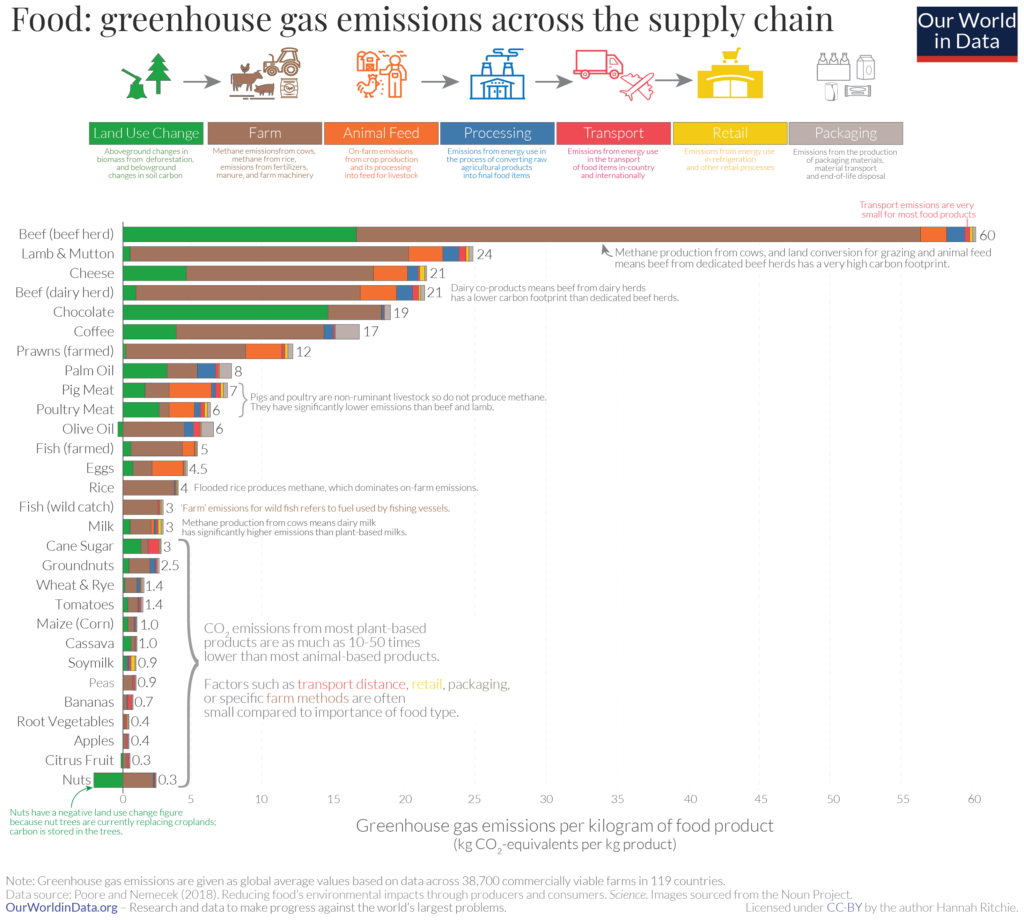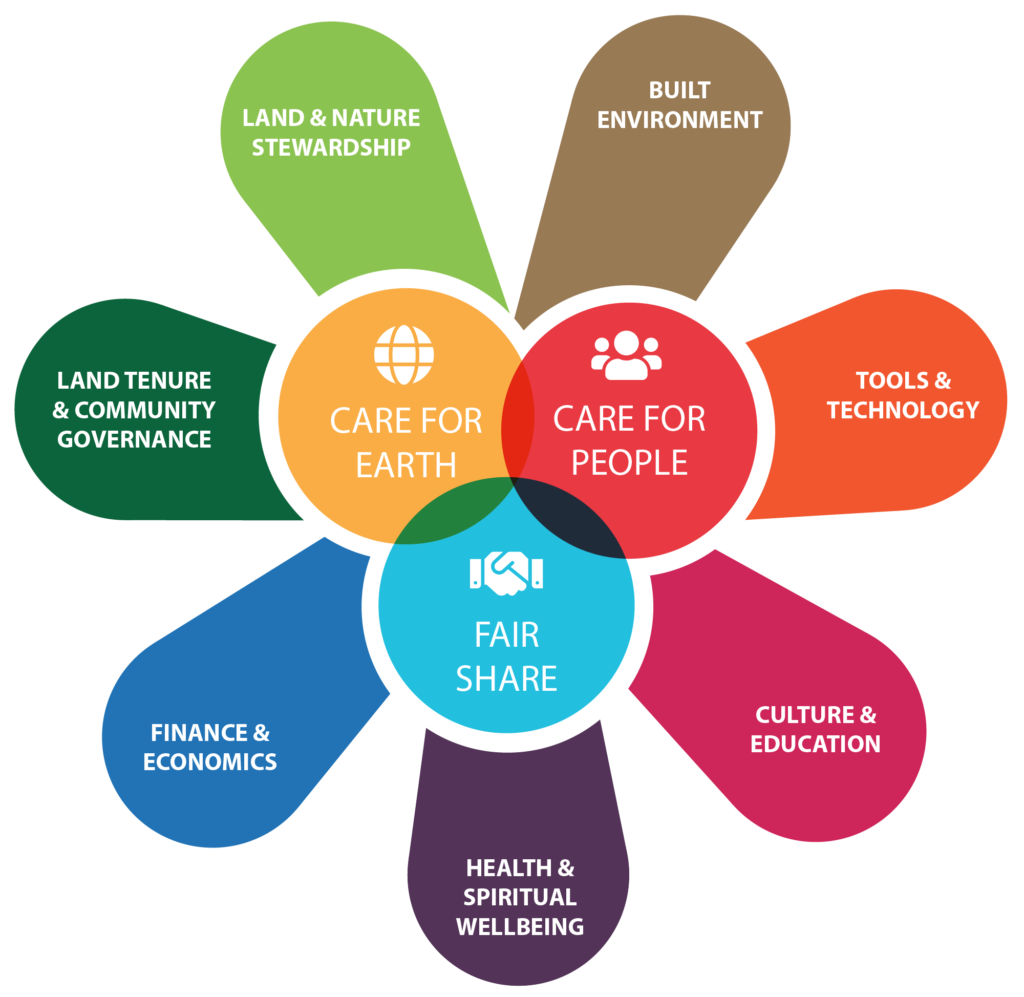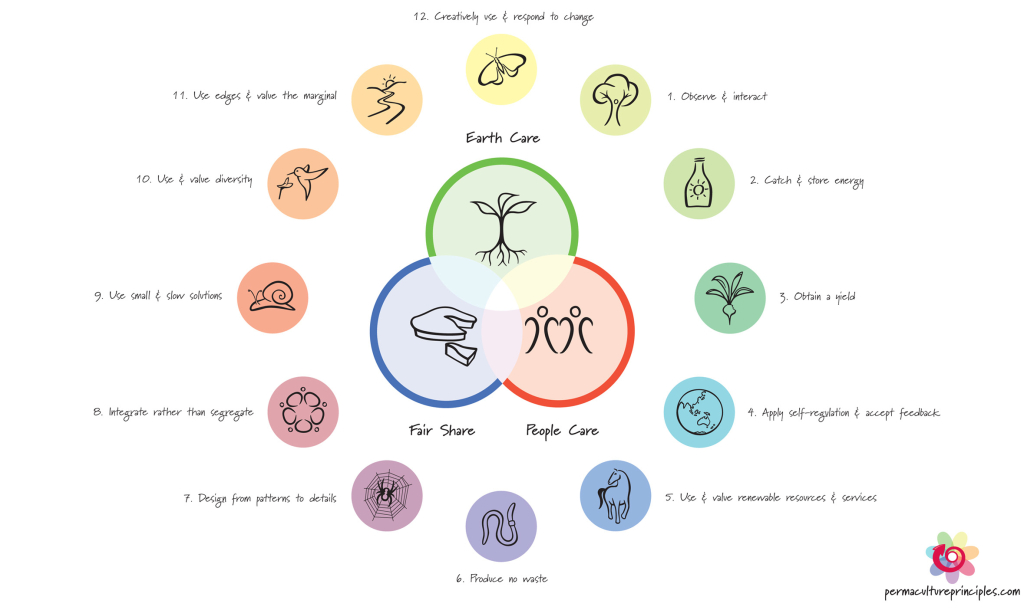The 3 Permaculture Ethics
- Earth Care
- People Care
- Fair Share
Additional Ethics Information:
- Permacultureacultureprincliples.com/ethics, David Holmgren
- Permaculture.co.uk, Maddy Harland
The 12 Permaculture Principles
- Observe and interact.
- Catch and store energy.
- Obtain a yield.
- Apply self-regulation and accept feedback.
- Use and value renewable resources and services.
- Produce no waste.
- Design from patterns to details.
- Integrate rather than segregate.
- Use small and slow solutions.
- Use and value diversity.
- Use edges and value the marginal.
- Creatively use and respond to change.
Additional Principles Information:
The 12 Design Principles of Permaculture as Rules of Living, Erin Meyer
12 Ways of Looking at a Garden, Cynthia Lo
Even MORE Information!
What permaculture is and isn’t, Heather Jo Flores
Permaculture FAQ, worldpermacultureassociation.com
What is Permaculture? A Primer in Patterns and Pictures – Introduction and Inspiration, Michael Hoag
What is Permaculture – A Primer in Pictures and Patterns – PART 1, Michael Hoag
How to Set up a Permaculture Farm in 9 Steps, permacultureapprentice.com
3 Reasons Why You Should Hire a Permaculture Designer, nurturestructure.com
The Wacky, Wonderful World of Permaculture Gardening, rootwell.com
Hint: it’s NOT a revolution disguised as gardening
First of all, permaculture isn’t a gardening technique. It’s a design system. That system can and should include plants and other living beings but no garden, by itself, can be a permaculture design unless it connects to the rest of the system (water, energy, waste, built environment, etc.)
And also: revolution in disguise is not revolution at all — it’s subversion, which is, arguably, a far more effective choice right now. To say that permaculture is “revolution disguised as gardening” not only confuses people, it radically understates the power of permaculture. It would be far more accurate to say “permaculture is radical subversion disguised as food security.”
from What permaculture is and isn’t, Heather Jo Flores
Permaculture is a system for designing human habitats (including landscapes, homesteads, homes, towns, cities, organizations and ultimately societies) which starts with ethics and principles, and uses “patterns” derived from natural systems, sustainable societies, and research-based practices. And the guiding GOAL of Permaculture is right in its name: to create “permanent” (sustainable, regenerative) “cultures.”
from What is Permaculture – A Primer in Pictures and Patterns – PART 1, Michael Hoag
How to Set up a Permaculture Farm in 9 Steps
- Start with Good Maps and an Understanding of Your Local Climate
- Develop Water Supply First
- Water Storage
- Water Harvesting
- Distribution of water
- Define Access Points
- Restore Existing Buildings and Introduce New Structures
- Subdivide The Land With Fencing
- Improve The Soil
- Plant Trees and Crops
- Introduce Animals
- Develop an Economy
from How to Set up a Permaculture Farm in 9 Steps, permacultureapprentice.com

Have more questions about permaculture? Reach out to us via our Mailchimp form. Thanks!

